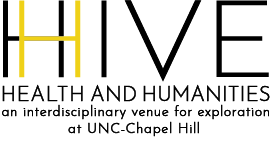By: Caroline Fryar
On Friday, March 4th, as a part of the Taking Care of Our Own Initiative in the Department of Psychiatry, UNC School of Medicine hosted Dr. Tait Shanafelt, one of the nation’s foremost researchers in physician burnout. Dr. Shanafelt, who directs the Program in Physician Well-Being at Mayo Clinic, presented a talk called “Finding Meaning, Balance and Personal Satisfaction in the Practice of Medicine”.
Burnout is roughly defined as a triad of symptoms: emotional exhaustion, depersonalization, and decreased sense of personal accomplishment. Taken together, these lead to decreased effectiveness at work, and are strongly correlated with depression. Dr. Shanafelt and his colleagues at Mayo Clinic have examined how physician burnout varies by specialty, how it changes over time, and how it affects physicians at different points in their careers.
When interviewed about their burnout, physicians cite environmental factors: high caseloads, number of hours worked, decreased autonomy, and isolation from their colleagues. Dr. Shanafelt also brought up the theory that there is a physician personality–that the very traits that make a person an attentive and effective physician can also be maladaptive, making her more susceptible to burnout.
The cost of burnout is personal for physicians, who suffer from higher rates of depression and suicide than the general population. It is also personal for patients, given the positive feedback relationship between physician burnout and medical errors (professional distress leads to more errors, which, in turn, increases distress). There is also a cost to society: burnout and career satisfaction scores are able to predict how likely a physician is to cut back her hours, or to leave the field altogether.
The questions that follow are also the subject of Dr. Shanafelt’s research. What can institutions do, on an organizational level, to combat burnout? What can physicians do, on a personal level?
Institutions can work to improve employee work environments–offer greater flexibility, improve efficiency, give physicians more autonomy, and lighten workloads–and help physicians achieve a better work-life balance. They can focus on compensation: a “fee for service” model of compensation incentivizes overwork and is correlated with higher levels of employee burnout. Institutions can also promote a supportive workplace community to promote physician well-being and engagement. They can also support physician well-being by providing a work environment conducive to engagement, or flow, and by incentivizing meaningful work.
The Physician Well-Being Index, a screening tool developed at Mayo, is a way of giving physicians objective feedback on their level of professional distress. Dr. Shanafelt’s work has found that most physicians are poor at self-assessment of their levels of distress, and that the objective feedback of the PWBI can offer real motivation to seek out resources that promote well-being.
Personally, physicians can work to improve their self-assessment skills through reflection and journaling, working to identify their personal and professional values–recognizing, all the while, that these will likely be in conflict. The audience was challenged: “Can you articulate what is most meaningful about your job? Be granular, be as specific as you can–don’t just say, patient care.” Spending less than 20% of work-time in a ‘most meaningful’ area is highly correlated with burnout, Dr. Shanafelt said, so awareness of one’s own sources of meaning and one’s time expenditures can be protective.
Since burnout is a multidimensional problem, Dr. Shanafelt emphasized the importance of building a ‘menu’ of options of physicians. If a reduction in full-time employment “is the only lever you offer,” he said, “that’s the lever they’re going to pull.” Instead, institutions should work to create a culture of self-assessment and self-awareness–so that physicians can recognize the symptoms of burnout before they become catastrophic–and provide physicians what they need–whether that be more flexibility in work hours, a stronger workplace community, or more time spent doing meaningful work.


